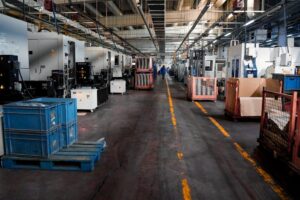How Autonomous Vehicles Impact Business Supply Chains
In the fast-paced world of global commerce, businesses constantly seek innovative methods to optimize supply chains and reduce costs. One of the most transformative technologies reshaping supply chain management today is autonomous vehicles (AVs). From self-driving trucks to drone deliveries, autonomous vehicles are revolutionizing how goods are transported, tracked, and delivered, offering unprecedented opportunities for supply chain efficiency and resilience. In this article, we’ll explore the multifaceted impact of autonomous vehicles on business supply chains, including benefits, challenges, and real-world applications.
Understanding Autonomous Vehicles in Supply Chains
Autonomous vehicles are equipped with advanced sensors, artificial intelligence (AI), and machine learning algorithms that enable them to navigate and operate without human intervention. Within supply chains, AVs primarily include:
- Self-Driving Trucks: Long-haul and last-mile transportation without drivers.
- Autonomous Delivery Robots: Small-scale robots handling local or campus deliveries.
- Delivery Drones: Aerial vehicles used for fast, last-mile parcel deliveries.
These technologies have begun to transform logistics operations by increasing automation, lowering operational costs, and improving safety.
Key Benefits of Autonomous Vehicles in Business Supply Chains
Businesses adopting autonomous vehicle technology in their supply chains experience a host of benefits, including:
1. Reduced Transportation Costs
Labor is one of the largest expenses in logistics. Autonomous trucks and delivery vehicles reduce the reliance on human drivers, cutting labor costs significantly. Additionally, AVs optimize routes and driving patterns, reducing fuel consumption.
2. Enhanced Supply Chain Efficiency
AVs operate 24/7 without fatigue, allowing continuous deliveries and faster transit times. This increases throughput, shortens lead times, and improves overall supply chain responsiveness.
3. Improved Safety and Reduced Accidents
Human error accounts for the majority of traffic accidents. Autonomous vehicles use sophisticated sensors and AI to detect obstacles, avoid collisions, and adhere strictly to traffic laws, reducing accident-related disruptions in supply chains.
4. Greater Predictability and Real-Time Tracking
AVs integrate easily with Internet of Things (IoT) and telematics systems, enabling real-time tracking and better inventory management. The predictability of autonomous schedules allows companies to optimize warehousing and downstream operations.
5. Environmental Sustainability
Many autonomous vehicles are electric or hybrid, contributing to reduced carbon footprints. Coupled with optimized routing, AVs support greener supply chain strategies aligned with corporate social responsibility goals.
Challenges Businesses Face in Adopting Autonomous Vehicles
While promising, integrating autonomous vehicles into supply chains is not without challenges:
- Regulatory Hurdles: Governments worldwide are still formulating regulations around AV use, creating uncertainty.
- Technology Reliability: Complex environments like urban areas pose challenges for AV sensors and software.
- High Initial Investment: Deployment of autonomous fleets requires substantial capital expenditure.
- Public and Workforce Acceptance: Concerns about job displacement and safety slow adoption.
Case Study: Autonomous Trucks Transforming Freight Logistics
Consider FreightCo, a global logistics provider that integrated a fleet of autonomous long-haul trucks across interstate routes in the US in 2023. Here’s a summary of their reported impacts within the first year:
| Metric | Pre-AV (2022) | Post-AV (2023) | Improvement |
|---|---|---|---|
| Average Delivery Time (Hours) | 48 | 36 | -25% |
| Fuel Efficiency (MPG) | 6.8 | 8.2 | +20% |
| Accident Incidents | 12 | 3 | -75% |
| Labor Costs ($M) | 15 | 10 | -33% |
FreightCo noted significant operational savings alongside improved safety, emphasizing how autonomous vehicles can dramatically improve supply chain logistics.
Practical Tips for Businesses Implementing Autonomous Vehicles
If your business is considering autonomous vehicles as part of its supply chain strategy, here are some practical tips to maximize investment returns:
- Start Small: Pilot autonomous delivery in controlled environments like campus or regional routes before scaling.
- Collaborate with AV Providers: Partner with experienced autonomous tech companies for customized solutions.
- Invest in Infrastructure: Upgrade facilities to support charging, maintenance, and software updates for AV fleets.
- Train Your Workforce: Prepare employees for new roles managing autonomous technology and data analytics.
- Monitor Regulatory Changes: Stay compliant with local and international laws governing autonomous vehicle operation.
The Future of Supply Chains with Autonomous Vehicles
Autonomous vehicles are more than just a futuristic concept-they are a growing reality that’s reshaping supply chains across industries. By enabling faster, safer, and more cost-effective transportation, AVs empower businesses to improve customer satisfaction and better navigate global markets.
As AI and sensor technologies advance, we can expect even deeper integration of AVs with supply chain management systems, fostering smart, end-to-end automation. From factory to front door, autonomous vehicles hold the key to next-generation logistics excellence.
Conclusion
Autonomous vehicles are rapidly changing the landscape of business supply chains by offering innovative solutions that drive efficiency, safety, and sustainability. While challenges remain, the tangible benefits demonstrated in evolving case studies make a compelling case for the widespread adoption of AV technology in logistics. Forward-thinking companies that embrace autonomous vehicle integration today will position themselves as leaders in the competitive markets of tomorrow.
By understanding the impact and strategically implementing autonomous vehicles, businesses can unlock new levels of productivity and customer satisfaction, ensuring their supply chains remain agile and future-ready.











